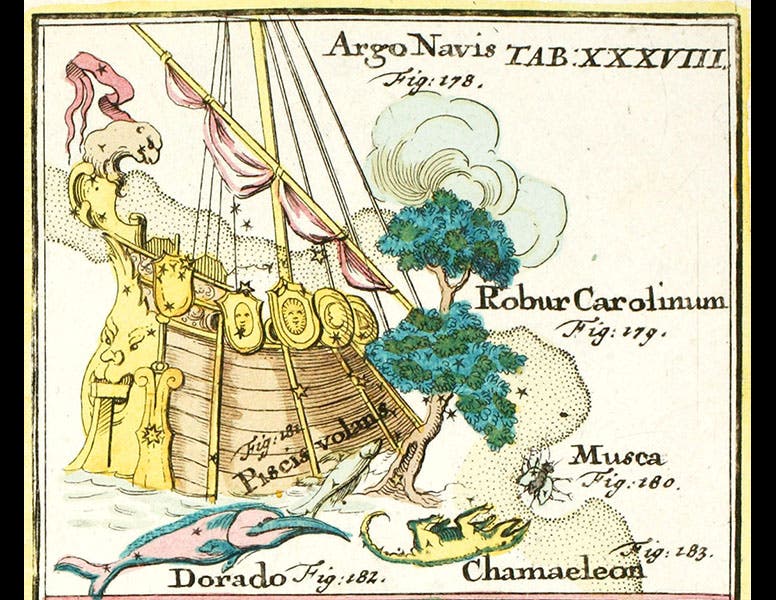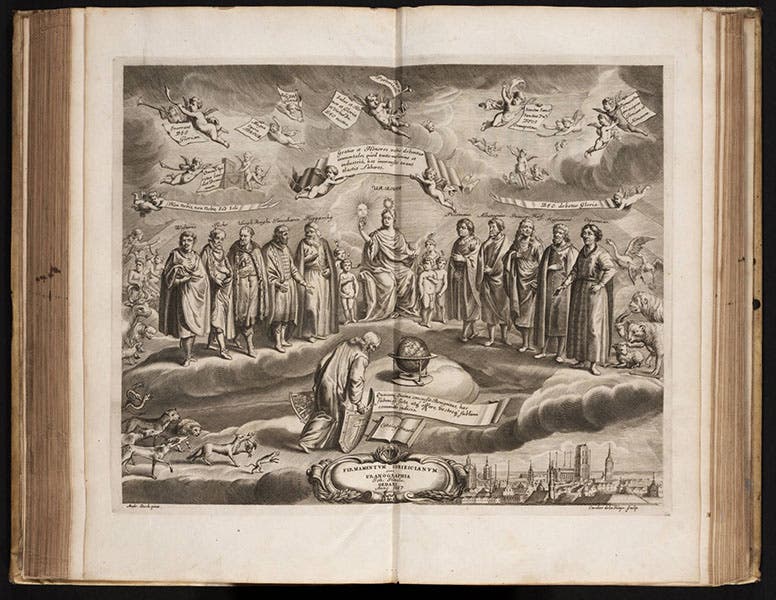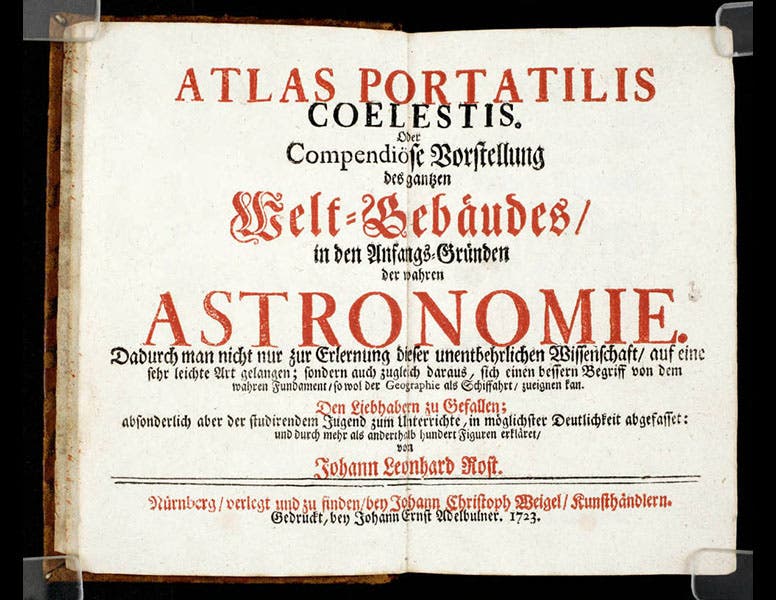Scientist of the Day - Johann Rost
Johann Leonhard Rost, a German novelist and astronomer, was born Aug. 14, 1688. It is odd how regional fame can be. Rost has a seven-page biography on the German Wikipedia, but only 1 1/2 lines on the English site. The highlight of the English article is at the bottom, under External Links, where it says: "Atlas Portatilis Coelestis, 1723 - Full digital facsimile, Linda Hall Library." It is Rost's "Portable Star Atlas" that we will look at on his birthday, since, as Wikipedia tells everyone, we have a copy in our History of Science Collection, which is also available online.
Rost's is not the first star atlas you can put in your pocket--that honor would go to John Seller's Atlas coelestis (1700). But Rost's Atlas is far prettier, because the constellation images are more handsome, and they are hand-colored. We see above the first pair of plates, which are bound facing each other (second image). Not only are the plates small, but as you can see, each plate has three panels on it, incorporating a half-dozen or so constellations – Ursa minor, Ursa major, Cepheus, etc. – that in a traditional star atlas would each have its own plate.
It is not hard to determine where Rost got both his star positions and his constellation figures. On the first pair of plates, most of the constellations are traditional, which means they would be found in Ptolemy’s star catalog of 138 A.D and in Renaissance picture books of the constellations. But Leo minor (the Little Lion) and Canes venatici (the Hunting Dogs) are not to be found in Ptolemy, nor in most of the star atlases of the 17th century, such as Bayer’s Uranometria (1603). If we look at another pair of Rost plates (third image), we see the traditional Cassiopeia and Serpentarius, but also some non-standard figures, such as Vulpecula (Fox with Goose) and Scutum Sobieski (the Shield of Prince Sobieski). These are important clues, because all four of these new constellations plus seven others were invented by Johannes Hevelius and included in his star atlas of 1690. Hevelius was very proud of his devises, and the frontispiece to his atlas shows Hevelius presenting his constellation offerings to Urania and a bevy of earlier stellar astronomers for their approval (fourth image). Hevelius holds two of them, Scutum and Sextans, in his hands, while the others follow on foot: Lacerta the lizard, Vulpecula with his goose, little Leo, the Lynx, and the Hunting Dogs. By choosing to include all these in his own star atlas, Rost was giving them their first stamp of approval, and other astronomers would follow suit. Four of Hevelius’ new constellations were subsumed into other constellations, but seven of them have been retained in the modern skies, including all the ones we have mentioned by name.
But, silly us, we have neglected thus far the twelve most important constellations in Rost’s atlas. For those of you who wouldn’t dream of starting the day without consulting the stars, we offer you the twelve constellations of the Zodiac, spread out over four plates of the Atlas Portatilis (fifth and sixth images). Any one of these will add a considerable touch of glamor to your morning horoscope.
Our last two images show the double-page title page, and two plates depicting some of the southern constellations (seventh and eighth images). A detail of Argo Navis from the latter was used for our first image.
Dr. William B. Ashworth, Jr., Consultant for the History of Science, Linda Hall Library and Associate Professor, Department of History, University of Missouri-Kansas City. Comments or corrections are welcome; please direct to ashworthw@umkc.edu.










![“Aurora Borealis,” hand-colored wood engraving by Josiah Wood Whymper, [Natural Phenomena], plate 2, 1846 (Linda Hall Library)](https://assets-us-01.kc-usercontent.com:443/9dd25524-761a-000d-d79f-86a5086d4774/0245ffcb-b70c-477c-8792-0a73ebd54eb2/Whymper%2011.jpg?w=210&h=210&auto=format&fit=crop)



